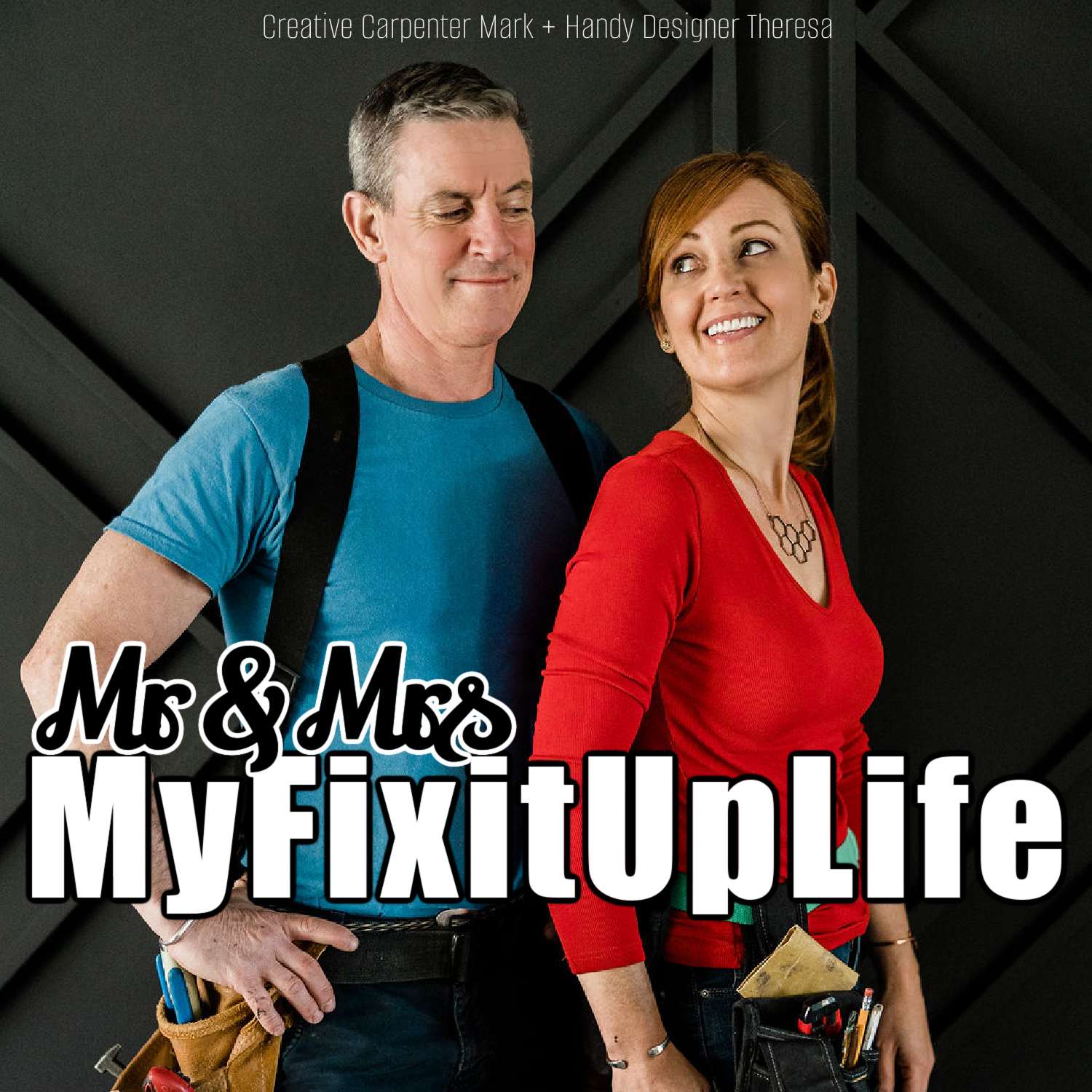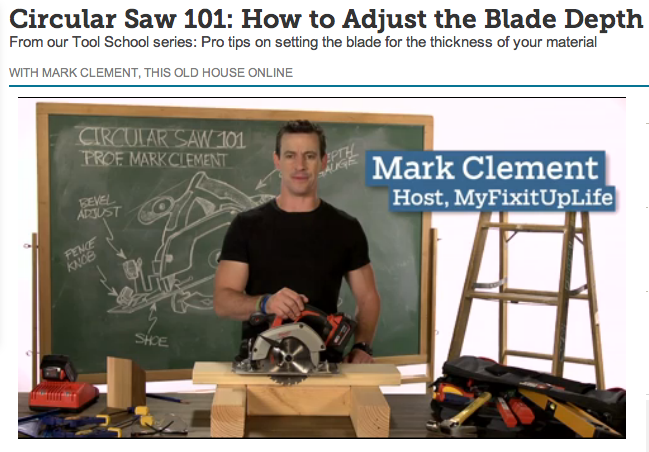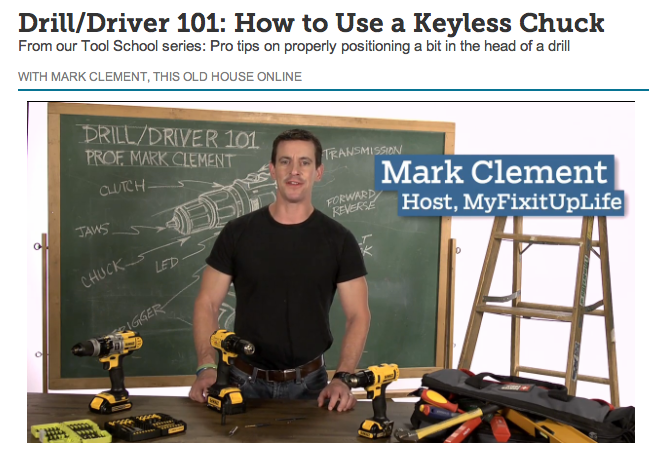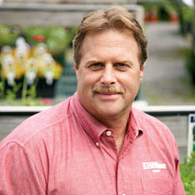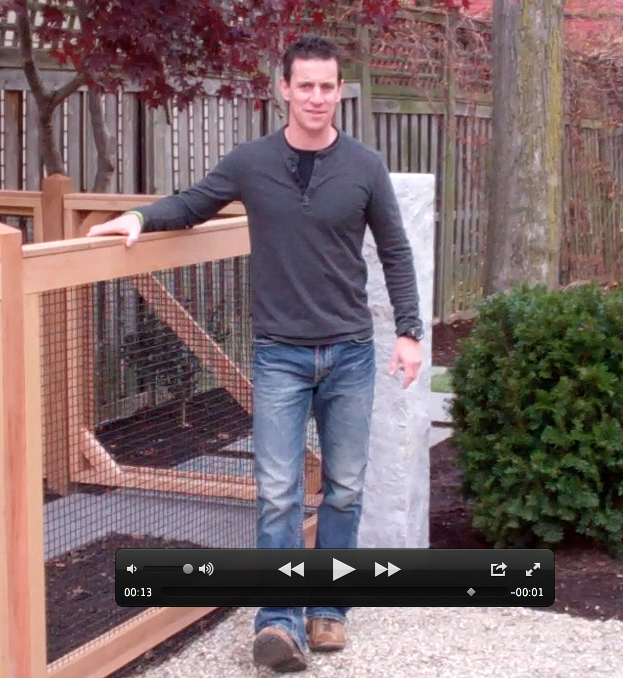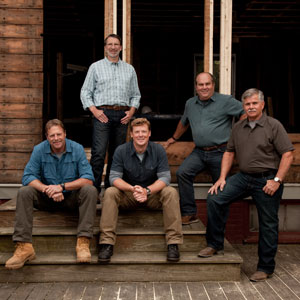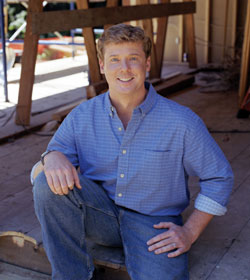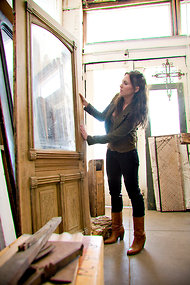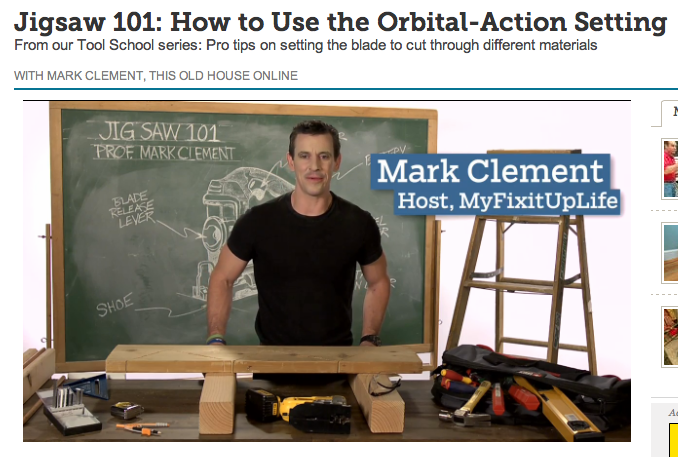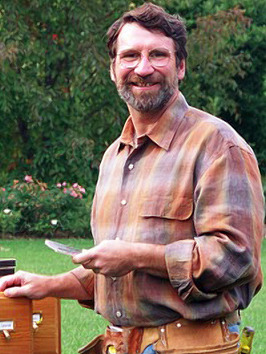
This Old House’s Norm Abram talks with Mark & Theresa about tools, California cooler, and seismic retrofitting
Theresa: We are here with Norm Abram and I said that he’s the nation’s favorite carpenter, but he’s my second favorite I have to say. My husband always comes first.
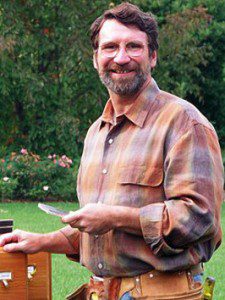
Norm: Good for you.
Mark: That’s awfully nice.
Theresa: I just had to get that all clear.
Mark: And I can’t say better carpenter.
Theresa: Favorite. I can say favorite.
Mark: I get it.
Theresa: But really we told some people that we’re going to talk to today and they were out of their minds that we would get a chance to talk with you. And the amount of people that asked us to get your autograph is outrageous. So you’re here at the International Builder’s Show, but you’ve been out in LA a lot lately.
Norm: Yeah we started our second ‘This Old House’ project for this season out in LA back in August actually. We tend to start those a little bit sooner than we have in the past because it’s a good size project number one, and number two, it’s ten episodes. In the old days we’d do like 20 episodes in New England and 6 episodes. And then it became 18 and 8, but lately we’ve devoted more time to our remote projects. And we didn’t go out of the New England area last year, so we found this project in LA County and our producer looked at seven or eight projects, brought them back and laid them out on the table, and I was immediately drawn to the one that we finally decided to go to. It’s in Silver Lake, it’s up above LA in the hills, it’s the most historic houses in LA County, and it’s where all of the big movie studios are. They actually work in animation, so we got a little inside track to one of the movie studios.
Mark: Cool.
Theresa: That is so cool.
Norm: But the house, the house is really cool. It’s a 1933 Spanish Colonial revival and it’s only like 1200 square feet, and it basically hasn’t been touched since it was built.
Mark: You’re kidding? Wow.
Theresa: How is that possible?
Norm: Well they still have the California cooler. Do you know what the California cooler is?
Theresa: I do not.
Mark: I might but you’re going to have to tell me.
Norm: It’s sort of like in England and in New England you might call it a lauder — it’s a place you keep your food, and basically it’s a closet with slotted shelves and it brings air through the bottom of the house and it takes it out through the roof. And it actually keeps a nice constant cool temperature so you can keep your produce and some of the vegetables you might have. That was still there — they were using that as a liquor cabinet now.
Mark: You want to keep your liquor fresh.
Norm: But it’s so small that they had the adjacent room with the refrigerator and dishwasher, and the kitchen had so little room whoever created this kitchen made these pull out extensions for the counters so you’d have a place to put things down. The bathroom was original, and it was bigger than the kitchen, which is odd.
Theresa: What? Really?
Norm: It had a big walk in shower.
Mark: Sure, sure, good design.
Theresa: That’s uncommon.
Mark: Is that in your next book?
Norm: That was like don’t build your shower bigger than your kitchen. But it was nice that it was untouched. I always like going into a house — structurally it seemed pretty sound considering all the earthquakes they have and considering we’re two miles from a fault.
Mark: Block house? Stick frame?
Norm: It’s a stick frame, stuccoed on the exterior, clay tile roof. Lot of Moorish influence on it, but the openings in the doors come up and arch and then come to a point so you have that look. Beautiful floors. The original floors in the house are beautiful. Cove ceilings, you know a few cracks here and there but they just needed room. Their family is growing and so the job is add on, go up in the backside, and do a huge seismic retrofit.
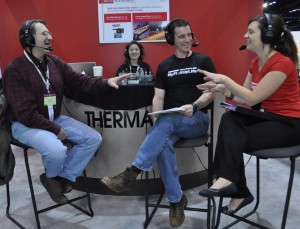
Theresa: Wow, a seismic retrofit. Now have you ever done that before?
Norm: Yeah this is our fourth project in California, and the second Santa Barbra project that we did we got into it there a little bit. On this one, I think we’re getting into it a little bit more. Even to the point where we went up to a test lab where they have what they call a shake table.
Mark: A shake table, I’ve seen that on the science channel.
Norm: Yeah there’s like four of them in the country and we got to see it happen. You’ll see it on the show. It’s not quite as dramatic as we had hoped and it only lasted about 15 seconds.
Theresa: You can’t blink during that. You can’t go to the bathroom and miss that 15 seconds.
Norm: But we did it and there was two tests that we showed and we had a lot of discussion about the fasteners and so forth, and we learned a lot. I’ve learned a lot even from before about what the approach is because our house, in 1966 the fault was found two miles away as I said, and it puts our house in a category E, which is one from the top.
Mark: Right.
Theresa: Oh wow.
Mark: So when you build a new frame, new construction, you’ve got metal hold downs you’ve got sheer panel, you’ve got all that other stuff — what happens to the existing structure? Was it open enough to retro fit those things in?
Norm: Yeah we could get into some areas where we had to put additional bolting to the foundation, build sheer walls which in the new section will actually strengthen a lot of the old section. Basically we took the whole back half of the house and pretty much took all of the walls down, and then had to do a huge retro fit in the basement. New beams, we had some great dramatic…
Mark: What were the beams that were there?
Norm: Well they had — I’m sure you’ve seen this, it’s a couple 2×8’s and a 4×4 just nailed together.
Mark: Yes.
Norm: And someone came along and their seismic retrofit was a little flimsy T-brace that they nailed in you know? Not with putting bolts and hold downs and rods and the whole deal.
Theresa: Now what is the family’s reaction to that? Are they like ‘Oh my goodness I can’t believe we’re been living in this house with that kind of construction.’ Or do they just think thank god you’re here?
Norm: Well they’ve lived there a long time and let’s face it the house has been there since 1933 and it’s gone through a lot of minor earthquakes, which is very normal in California. I think for them what they feel now is they have a young girl and they are expecting another child by the time we finish this project, and it’s just going to make the house safer for their family. It’s not about saving the house, I think people misunderstand that — seismic retrofitting is not about saving the house, it’s about protecting the occupants.
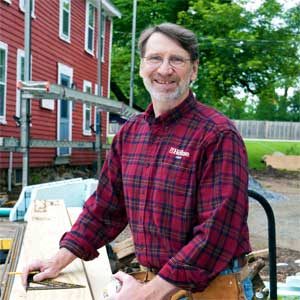
Theresa: Well I would be nervous knowing that my family has been in this house for all this time and that the house wasn’t as safe as it could be. I’d be saying thank god that we’re all okay.
Norm: Yeah.
Theresa: Now I have a question. When we go to our friends’ houses and they are working on a project and they want to show off, you know ‘Look at this whatever I did,’ and sometimes Mark encounters somebody — people will hang their crown molding upside down and he has to…
Mark: I have to go to my quiet place.
Norm: You’re just like me.
Theresa: I wonder what your reaction is.
Norm: I’ll give you an example. Several years ago we were at our best friends camp up on a lake in New Hampshire and every fourth of July there is this huge party, so they brought us to this place called The Church. It’s this huge house, and my first reaction was looking at it, nothing really special about this. So they bring me in and of course the owner is all proud and he’s taking me through every single room, and I’m not saying a word. My wife looks at me and she goes, ‘You didn’t say anything, you didn’t say very much.’ And I said, ‘If you don’t have anything good to say, you don’t say anything at all.’
Theresa: Oh no, oh no. That’s exactly what happens to Mark.
Mark: So what do you think? Yeah that’s interesting. That crown is right up by the ceiling.
Theresa: That’s hilarious.
Mark: So when you travel to wherever the out of town stuff is, what do you bring with you as far as tool stuff? Tool pouch and things of that nature?
Norm: Well it depends. This project is quite far away and I’m not doing as many trips to this one so I’m playing more of a hosting role here and the special locations like going to the seismic thing and going to the cabinet maker’s shop, and I did work with him a little bit they made a special piano for the refrigerator wall, and there’s not a lot of time. We’ve got a lot of other people. We’ve got a great general contractor and he’s sort of an in house design/build group and so he’s got his own plasters and his own electricians, so I’ve been doing a lot of interviews with them. There’s just not enough time these days on those projects like in the past for me to build an actual piece for the homeowners. It’s unfortunate but that’s just the way it’s turned out.
Mark: That’s just the way the time goes.
Norm: Yeah it’s a time issue.
Theresa: Unfortunately.
Mark: Now I was watching something, and I might have this wrong but it was the Auburndale house — you and Kevin, and Tom tore down what I think was a sleeping porch?
Norm: Yeah there was an old porch off the back.
Mark: On the back of it, and there was a lot of — I would call this if I had to give it a title — the dangers of DIY. Or the dangers of not pulling permits, because when you pulled it down, it was rotten to the point of bark mulch and stuff like that, and I guess what I’m asking is can you describe that a little bit?
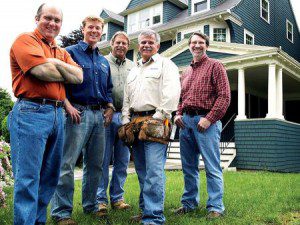
Norm: Yeah well it was added onto the house, it wasn’t original and it was under structured to start out with and it had flimsy windows and it just had to go. And so we picked it apart to a certain point and demolition is like you just reverse construction, the rule always is you don’t start at the bottom and go up, you start at the top and work your way down. So we picked away at it and we got to the point where we just had the first floor and we said ‘There’s got to be an easier way to take this thing down.’ Because the columns were so flimsy so we basically, that was kind of a dramatic moment at the end of the show where we just set it up so we could knock out all of the columns and the whole thing would just come down to close the show.
Theresa: Wow.
Mark: Well to close the show, and to close the segment as it just starts getting good…we’re out of time. We’re out of time so we’ll see you with more from the International Builders’ Show next on MyFixitUpLife.
